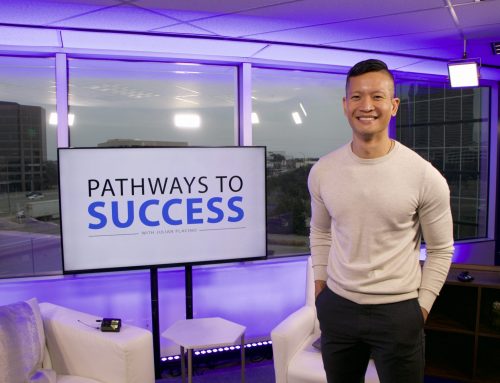The era of the specialized Rolodex as the main way to differentiate recruiters is over. LinkedIn killed it. This is not to say that talent-acquisition professionals can no longer add value, however. On the contrary, technological change has made it possible for recruiters to make themselves more critical to organizations than ever before. Recruiters, however, need to adapt and focus their value proposition on five main areas to remain relevant in the new digital era of talent acquisition. They can do this by following these steps:
Step 1: Help hiring managers define the correct search strategy
Asking insightful questions is essential to defining the correct search strategy. Strong recruiters will play a crucial role as thought partners in conversations with hiring managers, even if that means breaking the traditional transactional recruiter relationship. At a recent conference, Nellie Peshkov, Netflix’s Vice President of Talent Acquisition, and one of the leading thinkers in the field, explained, “Our value in talent acquisition is really about coaching, guiding, providing creative thinking and strategies for that hiring manager.” Michael Orozco, one of Netflix’s recruiters, added that while some recruiters ask their hiring manager, ‘What do you want?,’ Netflix recruiters ask questions such as, ‘Why are you looking for them?’ and ‘How will they make an impact?’
Recruiters often receive frantic calls from hiring managers looking to fill roles–convincing them to take a step back can be difficult, but valuable. For example, one of our clients recently asked us to urgently hire him a VP of New Retail to support the large number of new stores their company planned to open. “Find me someone who did this at Starbucks,” he told us. Since the coffee chain had also rapidly opened new stores, our client believed a candidate with experience there would have the right skillset to manage a large number of building contractors while recruiting and training staff for the new stores.
Instead of leaping off into a search for executives at Starbucks or similar chains, we asked him to describe the main challenges his company’s new stores typically face. The discussion helped our client realize that contrary to his original belief, attracting sufficient foot traffic due to his company’s weak brand recognition was their primary challenge. He, therefore, concluded that a background at Starbucks was likely to be the absolute wrong profile he needed. A few minutes invested upfront in such discussions will allow recruiters to focus their efforts from the beginning of a search, target more ideal profiles and land candidates faster.
Step 2: Get the best candidates to apply
A 2016 SilkRoad study of 13 million applicants and 300,000 hires at 1,200 companies revealed that the ‘post-and-pray’ strategy still is the most popular way of hiring candidates. That is, 42% of hires came from postings roles on job boards and company websites. Recruiter sourced candidates represented only 10% of hires.
While job postings have some benefits, hoping that star performers will fall into your lap, during the lowest period of unemployment in nearly fifty years, is not advisable. Successful recruiters help organizations by building a repeatable and a scalable formula for finding and engaging star performers. Recruiters can do this by experimenting with and increasing the efficiency of other sourcing channels.
At our firm, we have found the following through trial and error of thousands of messages when actively sourcing candidates:
- For some roles, emails to candidates that do not include a job description are 27% more efficient than those that do. This could be because candidates have more trust in emails without a link or attachment, or it could be that emails with job descriptions are longer.
- Personalized emails are about 75% more effective than generic ones.
- LinkedIn messages are about six times (!) more effective than emails for parts of the candidate pool.
Step 3: Select the best of the best
The next step is to help hiring managers better understand how to predict job performance. Google’s recruiting team is perhaps the best in the world at this: they help hiring managers understand what categories of questions they should ask candidates and even provides hiring managers with sample questions they can ask. In his book Work Rules! Laszlo Bock, former SVP of People Operations at Google, described how he helped reduce bias in Google’s interview process by having hiring decisions made by an independent committee and incorporating structured interview questions and job knowledge tests into their process.
Step 4: Get candidates over the finish line
Strong recruiters will help hiring managers get candidates over the finish line by helping their companies create a positive candidate experience as well as organizing and managing the interview and offer process. One candidate we spoke with who had recently declined an offer cited how she had originally been excited about the company’s pitch about being entrepreneurial and fast-moving, but started doubting if this was true when their interview process dragged on for three months.
Step 5: Evaluate
Finally, recruiters should evaluate their hiring practices on an ongoing basis and apply an iterative process to continuously improve their methods. Without establishing this critical step, it is difficult to determine what is working, and what isn’t. For instance, job knowledge tests may be predictive of job performance at Google, but have they been as successful at your organization?
Our own testing underscores this point, as we have found that methods that were highly effective two years ago no longer work. One simple example is that by using a candidate’s first name in the email subject line, we used to get up to twice as many candidates to engage in our searches. Now, perhaps because this tactic has been over-used, we have abandoned this approach as it no longer increases candidate engagement.
CEOs who position their talent acquisition teams to follow these five steps will gain a significant advantage in attracting the right talent in the new era of talent acquisition.







I think this is among the most significant info for me. And
i am glad reading your article. But should remark on few general
things, The web site style is ideal, the articles is really
excellent : D. Good job, cheers
Thank you Georgina Feliz! We appreciate the comment!
I couldn’t resist commenting. Perfectly written!